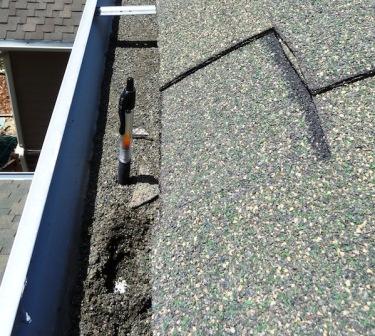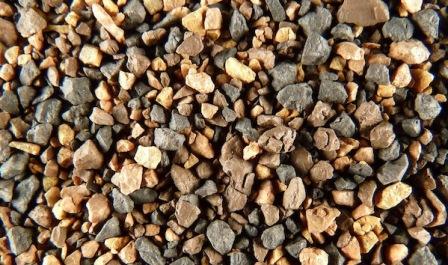Mastering Roof Inspections: Asphalt Composition Shingles, Part 46
by Kenton Shepard and Nick Gromicko, CMI®
The purpose of the series “Mastering Roof Inspections” is to teach home inspectors, as well as insurance and roofing professionals, how to recognize proper and improper conditions while inspecting steep-slope, residential roofs. This series covers roof framing, roofing materials, the attic, and the conditions that affect the roofing materials and components, including wind and hail.
DAMAGE to the GRANULE LAYER
Functional Damage
A few missing granules do not constitute functional damage. Just the fact that you can see evidence of a hailstrike does not mean that shingles have been functionally compromised. Granule loss has to be visible to the casual observer to qualify as functional damage. If you have to bend down and squint and wonder whether or not you’re looking at a hailstrike, granule loss is not severe enough to qualify as functional damage.
Hail damage to the granule layer is affected by a number of variables, including:
- the properties of the shingles;
- the properties of the hailstones;
- whether the hail is wind-driven; and
- the orientation of the roof slope to the direction of hail fall.
The ways that these variables combine affect the nature of the granule loss.
Asphalt Quality
The properties of the asphalt layer have a great effect on granule loss because the asphalt is what bonds the granules to the shingle's surface.
As asphalt ages and loses its volatiles and the bond between granules and asphalt deteriorates, it will take less impact-energy for hail to displace granules.
Shingles with old or poor-quality asphalt do not hold granules as well as shingles with newer, high-quality asphalt. This means that old shingles are more likely to lose granules when struck by hail. Even small hail can dislodge granules from older shingles. This is especially true when hail is accompanied by heavy rainwater runoff. Heavy runoff can erode loosened granules.
"Hitchhikers"


During the early part of a shingle’s life, many of these excess granules will be loosened and washed off the roof by storms. Even fairly small hail can increase the rate at which new shingles shed these loosely attached hitchhikers.
Hailstone Properties
The amount of granule loss caused by a hailstrike is affected by the amount of impact-energy carried by the hailstone. The amount of damage done to the granule layer is related to the hail's properties, such as size, density, and free-fall velocity.
Wind-Driven Hail
Wind-driven hail carries more impact-energy, so it may cause more granule loss on older roofs.
The condition of a shingle roof affects the amount of damage that hail will inflict. As shingles age and deteriorate, they become increasingly brittle and less able to absorb the impact of a hailstrike. Older shingles are damaged more easily than newer shingles.
Shingle quality is also a consideration. Given hail with identical impact-energy, thin, low-quality shingles will suffer damage before thick, high-quality shingles.
**************************************************
Learn how to master a roof inspection from beginning to end by reading the entire InterNACHI series: Mastering Roof Inspections.
Take InterNACHI’s free, online Roofing Inspection Course
Mastering Roof Inspections
Roofing Underlayment Types
Inspecting Underlayment on Roofs
Fall-Arrest Systems
Roofing (consumer-targeted)
More inspection articles like this

